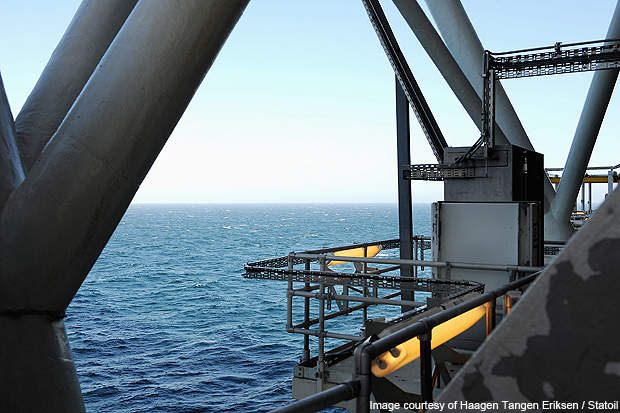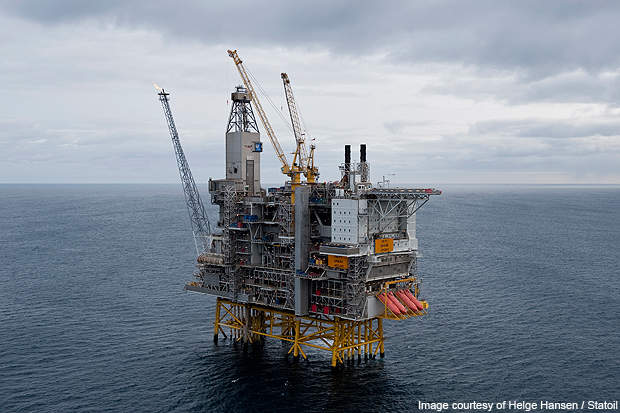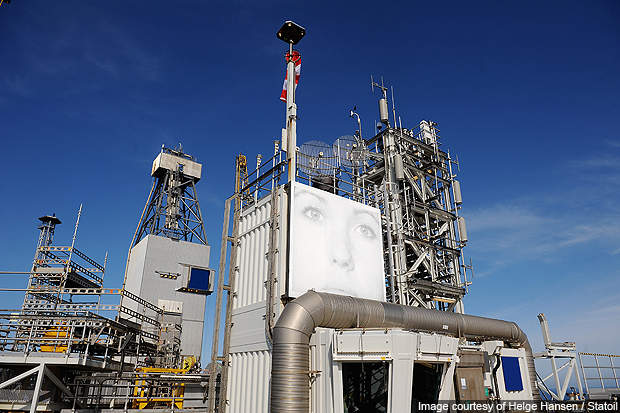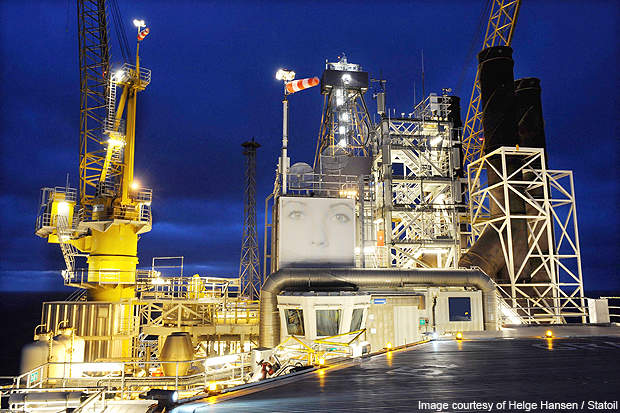Grane oil field is situated 185km from the city of Haugesund, Norway, in the North Sea. The field lies in Block 25/11 at a water depth of 127m. It was discovered by Norsk Hydro in 1991 and first production occurred in September 2003. The life of the field is estimated to be 25 years.
Statoil Petroleum, which operates the field, holds 36.67% interest in it. Petoro owns 28.94%, ExxonMobil Exploration & Production Norway 28.22% and ConocoPhillips Skandinavia holds 6.17% stake.
Grane geology
The Grane field contains one main reservoir and a few other segments at a depth of 1,700m. The reservoir covers an area of 10km² and has an average pay thickness of 50m. Reservoir porosity averages at 33% with a permeability of 5-10 Darcies.
The reservoir largely contains homogeneous marine turbidite sandstones of the Heimdal formation belonging to the Paleocene era. It also contains sandstones in the Lista formation. The reservoir does not include a gas cap.
Oil reserves
The Grane field is the first to produce heavy crude oil in Norway. The oil has high viscosity of 12cp, high density of 18.7°API and sulphur content of 0.83%. Proven and probable reserves of the field are estimated at 700m barrels.
Field development
Twelve development wells, broken down into nine production and three injection wells, were drilled in March 2003. Saipem’s Scarabeo 6 semi-submersible rig was used for drilling.
Additional drilling activities included 25 platform wells drilled by Odfjell Drilling Management. A total of 31 production wells have been drilled at the field.
Four water injection multi-lateral wells are planned to be drilled in future.
Statoil is planning two water injection wells in 2010.
Oil from the Grane field is produced using the Grane platform, which is a conventional fixed steel jacket. It includes drilling, production, processing and accommodation facilities. The steel jacket weighs 17,500t and the topsides weigh 22,500t.
The drilling module of the platform is situated at the aft end. The platform features 40 well slots and accommodates 130 beds.
Production
Oil is recovered by injection of natural gas at the top of the reservoir structure. Natural gas injection provides pressure support and maintains high production and extraction rates. The natural gas required for the field is supplied from the Heimdal Gas Centre through a 50km long 18in pipeline.
The Grane field reached a peak production of 243,000 barrels of oil per day (bbl/d) in March 2006. The field is currently producing at a rate of more than 200,000bbl/d.
Export
Oil produced from the field is exported to Statoil’s Sture terminal in Øygarden near Bergen in Norway.
The pipeline is 210km long and has a diameter of 29in. The oil is stored in huge rock caverns at the Sture terminal before being distributed around the world.
Contracts
In 2000, Kvaerner Oil & Gas was awarded a $389m contract for construction of the production unit for the Grane platform. The company was also awarded a $16m for supplying pumps and pump systems for the platform.
The steel jacket of the platform was constructed by Aker Verdal and the drilling module by Aker Stord.
Other contractors of the platform include Heerema Marine Contractors, Europipe, Mitsui, Bredero Price, European Marine Contractors, VJ Murphy Veidekke and Fabricom.
Odfjell Drilling Management was awarded the drilling contract for the field in April 2001.
In February 2010, Statoil extended the contract by two years to 2012.
In 2003, Weatherford International was awarded a $20m contract for supplying single wirewrap screens and liner hangers for the field.
Emerson Process Management supplied the field with wireless technology in February 2008 to monitor the well-head and heat exchanger pressures on the Grane platform.
The self-organising wireless mesh technology enables remote monitoring and control of the platform. It eliminates the need for daily visits and monitoring of well-head pressure readings.






